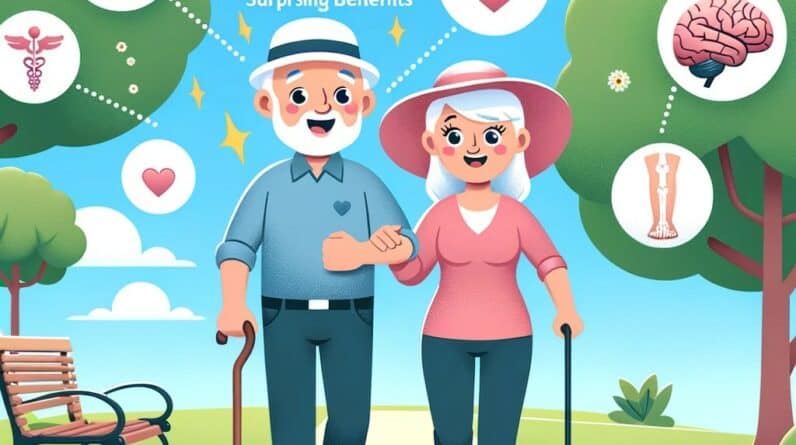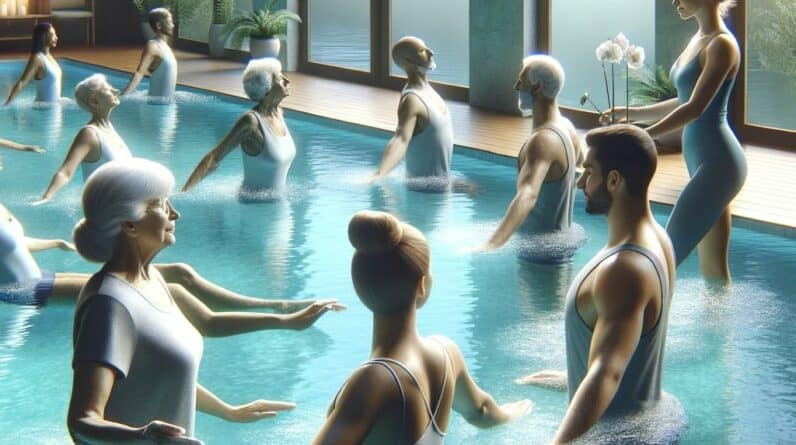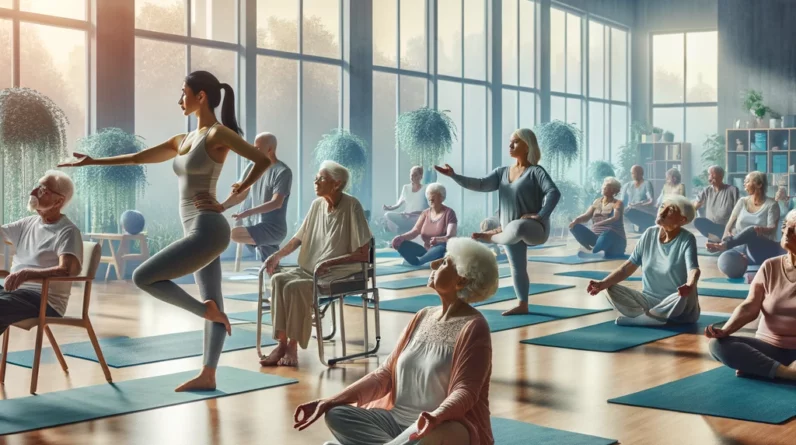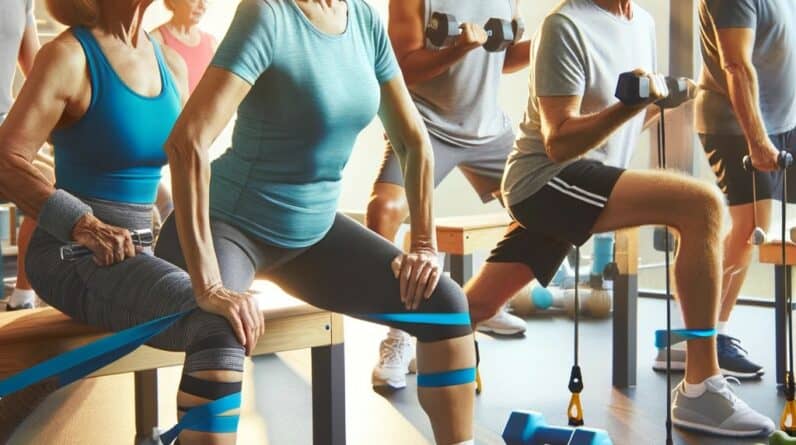Key Takeaways
- Gentle yoga poses can significantly reduce arthritis pain and increase mobility.
- Yoga strengthens muscles around joints, enhancing support and reducing strain.
- Practicing mindfulness through yoga can alleviate stress, which often exacerbates arthritis symptoms.
- Seated yoga poses are particularly beneficial for those with limited mobility or severe arthritis.
- Always consult with a healthcare professional before starting a new exercise regimen, especially if you have arthritis.
Introduction to Yoga for Arthritis
Living with arthritis can feel like a constant battle. The stiffness, the pain, the limits on your daily activities can all weigh heavily on your spirit. But there’s hope.

Dementia Discovery That is Leaving Doctors Speechless (Try This Tonight)
Better than Morphine For Joint Pain… Yet Safer Than Aspirin?
Retire With Freedom. Start Earning Extra Cash Today.
Gentle yoga poses offer a natural way to soothe and strengthen your body, helping you reclaim some of the freedom arthritis might have taken away.
Yoga is more than just a series of stretches. It’s a holistic practice that nurtures both body and mind. Through gentle movements and mindful breathing, yoga can help alleviate the discomfort associated with arthritis.
Let’s explore how incorporating yoga into your routine can empower you to live more comfortably and actively.
Benefits of Gentle Yoga Poses for Relief
Yoga is a low-impact exercise, making it an ideal choice for people with arthritis. It focuses on gentle movements that increase flexibility and strength, crucial elements in managing arthritis symptoms.
The benefits of yoga extend beyond physical relief; it also enhances mental well-being by reducing stress and promoting relaxation.
Research has shown that regular yoga practice can lead to improvements in pain levels and physical function for arthritis sufferers. By gently stretching the muscles and tendons around your joints, yoga can help maintain and even improve your range of motion.
This is particularly important for preventing further joint damage and maintaining independence in daily activities.
The Role of Yoga in Joint Strength and Flexibility
Strengthening the muscles around your joints provides much-needed support, reducing the load on your joints themselves. Yoga offers a balanced approach to strengthening, with poses that engage multiple muscle groups without putting excessive strain on any one area.
For those dealing with arthritis, understanding arthritis pain relief options can complement your yoga practice effectively.
Flexibility is equally important. Stiffness is a common complaint among those with arthritis, but regular yoga practice can help keep your joints supple. Improved flexibility can lead to better posture and alignment, which in turn reduces the risk of injury and further joint wear.
Mindfulness and Stress Reduction Through Yoga
Stress can exacerbate arthritis symptoms, making pain and stiffness feel even worse. Yoga encourages mindfulness, the practice of being present in the moment, which can significantly reduce stress levels.
By focusing on your breath and movements, yoga helps you cultivate a sense of calm and control.
This mental aspect of yoga is just as important as the physical benefits. It teaches you to listen to your body, understand its limits, and work with them, not against them.
Over time, this can lead to a more positive outlook on your condition and an improved quality of life. For more on maintaining a positive mindset, explore the importance of mental health for senior well-being.
Seated Yoga Poses for Arthritis
For those who find standing poses challenging, seated yoga poses offer a wonderful alternative. They allow you to enjoy the benefits of yoga without putting too much pressure on your joints. These poses can be performed on a chair or the floor, depending on your comfort level.
Simple Seated Forward Bend
The seated forward bend is a gentle stretch for your back and legs. Sit comfortably on the edge of a chair with your feet flat on the floor. As you inhale, lengthen your spine. As you exhale, slowly bend forward, reaching your hands toward your feet.
Go only as far as is comfortable and hold the position for a few breaths before gently sitting back up. For more ways to enhance your well-being, consider exploring mental health tips for seniors.
Seated Cat-Cow Stretch
This pose helps improve flexibility in your spine. Sit on a chair with your feet flat on the floor. Place your hands on your knees. As you inhale, arch your back and look up (cow pose).
As you exhale, round your spine and tuck your chin to your chest (cat pose). Repeat several times, moving with your breath.
Seated Twists for Spinal Flexibility
Twists are excellent for maintaining spinal mobility. Sit tall on a chair with your feet flat on the ground. Place your right hand on the back of the chair and your left hand on your right knee.
Inhale to lengthen your spine, then exhale and gently twist to the right. Hold for a few breaths, then switch sides.
Modified Classic Yoga Poses
When dealing with arthritis, it’s crucial to modify classic yoga poses to ensure they are both safe and effective. These adaptations can help you maintain balance, improve strength, and reduce joint pain without overexertion.
Modifying poses doesn’t mean you’re missing out on the benefits. In fact, it’s quite the opposite. By adjusting the poses to suit your needs, you’re maximizing their positive impact on your body while minimizing the risk of injury. Let’s explore some of these modified poses.
Modified Warrior Pose for Stability
The Warrior Pose is a powerful stance that builds strength and stability. To modify it for arthritis, stand with your feet hip-width apart, using a chair or wall for support if needed.
Step one foot back and bend the front knee, keeping it directly over the ankle. Raise your arms to shoulder height and hold the pose for a few breaths. Switch sides and repeat.
This version of the Warrior Pose focuses on maintaining balance and strengthening the legs without putting undue pressure on the knees or hips. It’s an excellent way to build confidence and stability.
Gentle Tree Pose for Balance
The Tree Pose is all about balance and focus. Start by standing near a wall or chair for support. Shift your weight onto one foot and place the sole of the other foot against your calf or thigh—never on the knee.
Bring your hands together in front of your chest or raise them overhead if comfortable.
- Focus on a point in front of you to help maintain balance.
- Engage your core muscles to stabilize your body.
- Hold the pose for a few breaths, then switch sides.
By using support and keeping the lifted foot low, you reduce the risk of falling and make the pose more accessible for those with arthritis.
Adapted Triangle Pose for Joint Comfort
The Triangle Pose is a wonderful stretch for the legs and spine. To adapt it, stand with your feet wider than shoulder-width apart. Turn one foot out and the other slightly in.
Extend your arms to the sides, parallel to the floor. Bend at the hip over the turned-out leg, resting your hand on a block or your shin, while the other arm reaches toward the ceiling.
This adaptation allows you to enjoy the stretch without overextending or putting pressure on your joints. Remember to keep your movements slow and controlled, focusing on your breath.

Practicing Yoga Safely with Arthritis
Safety should always be your top priority when practicing yoga, especially with arthritis. It’s important to listen to your body and respect its limits. Yoga for arthritis should never cause pain; if it does, it’s time to stop and reassess your approach.
Use of Props and Support for Ease
Props like blocks, straps, and bolsters can be invaluable tools in your yoga practice. They provide support, enhance comfort, and make poses more accessible.
For instance, using a block in standing poses can help you maintain proper alignment without straining your joints. Additionally, understanding the differences in arthritis pain relief can further aid in managing joint discomfort during your practice.
Signs to Avoid Pushing Through Pain
Pay attention to your body’s signals. Pain is your body’s way of telling you something isn’t right. If you feel sharp or intense pain during a pose, stop immediately. Gentle discomfort is normal as your body stretches and strengthens, but pain is not.
Importance of Guidance from Instructors
Having an experienced yoga instructor can make a significant difference, especially if they have experience working with arthritis patients. They can provide personalized modifications and ensure you’re practicing poses safely.
If attending a class isn’t possible, consider online resources or instructional videos designed for arthritis sufferers.
Remember, yoga is a personal journey. Go at your own pace, and don’t compare yourself to others. Your practice is about what feels right for your body.
Breathing and Relaxation Techniques
Breathing is a fundamental aspect of yoga that often gets overlooked. Controlled breathing can help manage stress, enhance relaxation, and even reduce pain perception. It’s a powerful tool for anyone dealing with arthritis.
Start with simple deep breathing exercises. Sit comfortably, close your eyes, and take slow, deep breaths through your nose. Focus on filling your lungs completely and then gently exhaling. This practice can calm your mind and body, preparing you for your yoga session.
Deep Breathing to Ease Stress
Deep breathing is an incredibly effective way to manage stress, especially for those living with arthritis. By focusing on your breath, you can calm your mind and body, reducing the impact of stress on your joints. Here’s how to practice deep breathing:
- Sit or lie down in a comfortable position.
- Close your eyes and take a slow, deep breath in through your nose.
- Fill your lungs completely, feeling your chest and abdomen rise.
- Exhale slowly through your mouth, releasing any tension.
- Repeat for several minutes, focusing solely on your breath.
As you practice, you may notice a sense of calm washing over you. This simple technique can be done anywhere, anytime, making it a valuable tool for managing stress and enhancing your yoga practice.
Guided Imagery for Relaxation
Guided imagery is another powerful relaxation technique that can help alleviate the mental burden of arthritis. It involves visualizing peaceful, calming scenes in your mind, which can distract you from pain and promote relaxation.
To try guided imagery, find a quiet space where you won’t be disturbed. Close your eyes and picture a place that brings you joy and tranquility, like a beach or a forest.
Focus on the details—the sounds, the smells, the sensations. Allow yourself to fully immerse in this mental escape, letting go of any tension or stress. For more ways to enhance your mental well-being, consider exploring the importance of mental health for senior well-being.
Progressive Muscle Relaxation
Progressive muscle relaxation (PMR) is a technique that involves tensing and then relaxing each muscle group in your body. This method can help reduce tension and improve awareness of your body’s stress levels. To practice PMR:
- Find a comfortable position, either sitting or lying down.
- Starting with your toes, tense the muscles for a few seconds, then release.
- Move up through your body, focusing on each muscle group in turn.
- Pay attention to the sensation of relaxation after releasing the tension.
Regular practice of PMR can enhance your overall sense of well-being and provide relief from the physical and emotional stress of arthritis.
Conclusion and Encouragement
Yoga offers a holistic approach to managing arthritis, blending physical movement with mindfulness and relaxation. By incorporating gentle yoga poses into your routine, you can improve your joint health, reduce pain, and enhance your quality of life.
Remember, the journey is personal and should be paced according to your comfort and ability.
Summary of Yoga Benefits for Arthritis
Yoga provides numerous benefits for those with arthritis, including promoting heart health as you age.
- Increased flexibility and joint mobility
- Improved muscle strength and support for joints
- Reduced stress and enhanced mental well-being
- Better posture and balance
- Enhanced overall quality of life
These benefits can lead to a more active and fulfilling lifestyle, empowering you to manage arthritis more effectively.
Encouragement to Start a Personal Yoga Journey
Starting a yoga practice can be daunting, but remember, you are not alone. Many resources and communities are available to support you on your journey.
Begin with simple poses and gradually build your practice as you gain confidence and strength. Listen to your body and celebrate every small victory along the way.
Yoga is not about perfection; it’s about progress. Embrace the journey, and you’ll find not only relief from arthritis symptoms but also a deeper connection to yourself. For additional relief options, consider exploring arthritis pain relief alternatives.
Frequently Asked Questions (FAQ)
As you embark on your yoga journey, you may have questions about its impact on arthritis. Here are some common queries and their answers. Additionally, understanding the importance of mental health can greatly enhance your overall well-being.
Can yoga cure arthritis?
Yoga cannot cure arthritis, but it can significantly alleviate symptoms. By improving flexibility, strength, and stress management, yoga can help you manage arthritis more effectively and improve your quality of life.
Additionally, focusing on mental health can further enhance the benefits of yoga for those living with arthritis.
What are the best times to practice yoga for arthritis?
The best time to practice yoga is when your body feels most comfortable. Many find morning sessions beneficial for reducing stiffness, while others prefer evening practice to relax after a long day. Listen to your body and choose a time that suits your needs.






